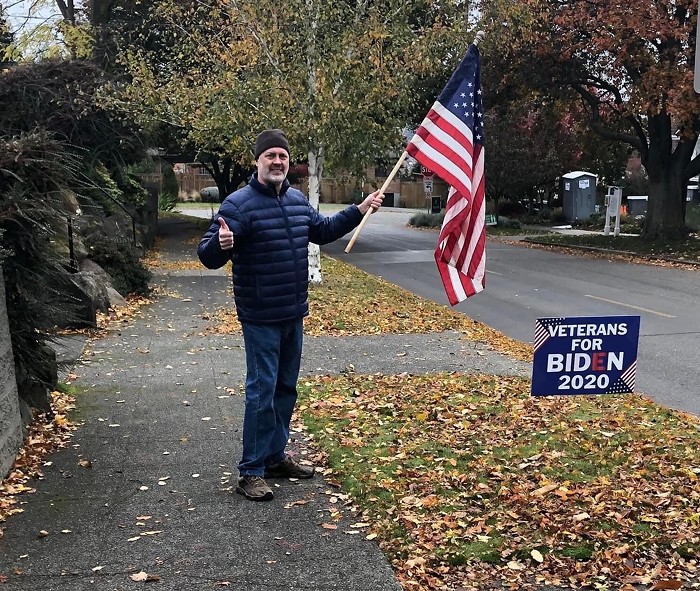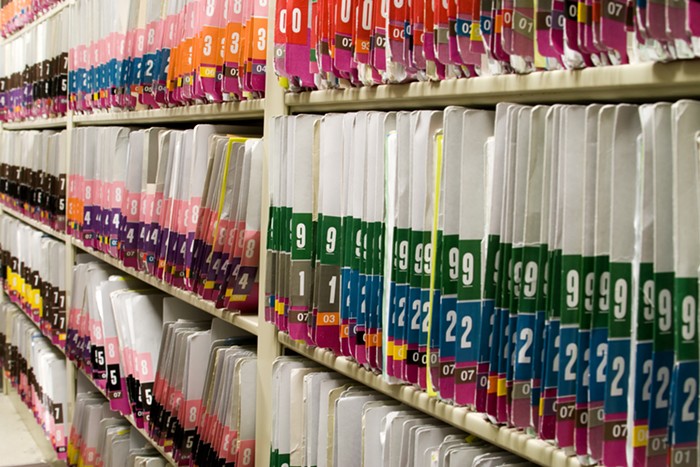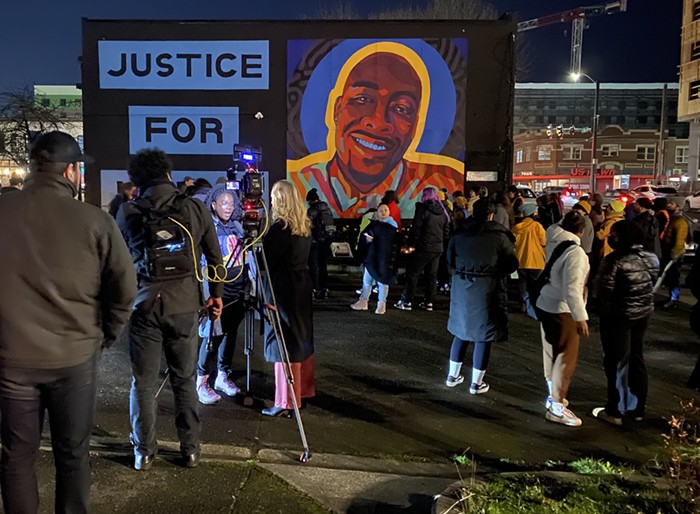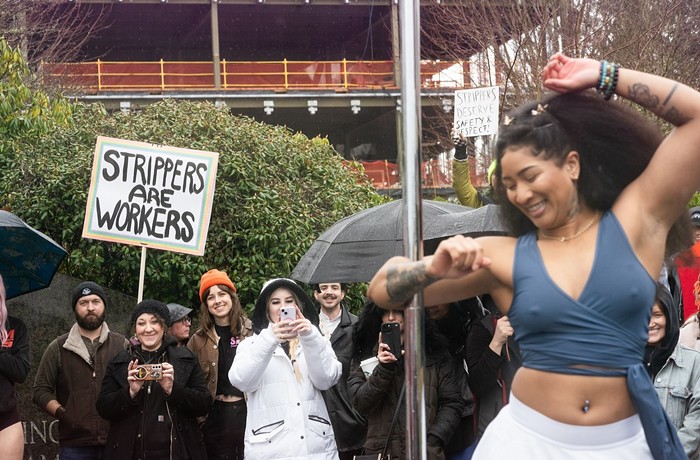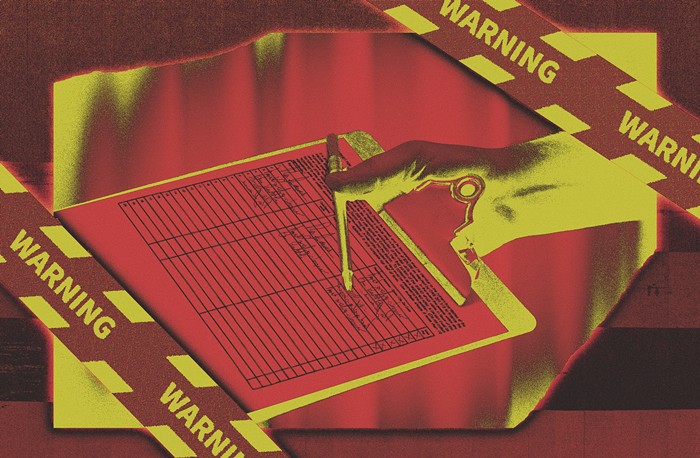
After years of failed starts, the Washington state Senate is poised to pass transformative climate legislation that would cap carbon, clean up fuels, and rake in billions to invest in various green energy and carbon reduction projects.
To satisfy conservative Democrats this year, however, the chamber paired those massive proposals with an $18 billion dollar transportation package that would pour a lot of cement to widen highways, undermining the state's goal of achieving net zero carbon emissions by 2050.
At a press conference on Tuesday, Sen. Marko Liias acknowledged the Legislature had "a lot of work to do" around where to invest those transportation dollars, and argued that the "centerpiece" of the transportation package shifted from expanding highway capacity to "maintenance and preservation of our existing system, and to electrifying our system," which represented an improvement on earlier versions of the proposal.
As I reported last week, the Senate is already working to move this "grand bargain" through the system. The transportation package, spearheaded by Sen. Steve Hobbs, had a hearing this week. The low-carbon fuel standard, sponsored by Rep. Joe Fitzgibbon, and the cap and trade bill, sponsored by Sen. Reuven Carlyle, could see a floor vote at any moment. Just this morning, a source said the Senate will vote on those latter two climate proposals today.
Ambitious as it seems, that cap and trade bill, which Hobbs uses to fund a big chunk of his transportation package, doesn't satisfy the demands of the climate justice community, who argue that policymakers lifted their rhetoric to patch up a proposal that won't do enough soon enough to stop polluters from filling the lungs of a disproportionally large number of Black and brown people with poison. They argue that setting up a carbon market to trade pollution credits won't fix a problem a market created in the first place, and point to California's arguably wobbly carbon market as a failure. Critics also deeply question the Senate's wisdom of following the lead of British Petroleum, who has heavily influenced the bill.
The bill's proponents thank the environmental justice advocates for their tireless work, but say Washington's bill learned from California's mistakes and included some provisions supported by that community. And because we're talking about Washington state politics, they also say the cap and trade bill has a better shot at surviving an inevitable referendum if the proposal ultimately passes. Since BP supports the cap and trade bill, they'll be less likely to dump millions into that referendum campaign.
A dusty proposition
In 2018 Washington was pumping out nearly 100 million metric tons of carbon into the air. To help slow the catastrophic rise in global temperatures, last year the Legislature vowed to cut that number in half by 2030, and then reduce it to 5 million metric tons by 2050.
To achieve that goal, lawmakers argue the low-carbon fuel standard will go some way in reducing transportation emissions, which represent nearly half of the state's carbon output. To deal with stationary polluters, the Legislature wants to establish a cap and trade market similar to the ones run by a collection of northeastern states, the European Union, and California-Quebec.
This desire didn't come from nowhere.
To hit some highlights: back in 2003, Gov. Gary Locke signed onto the Western Climate Initiative, which enlisted the whole west coast in an effort to combat climate change and included a particular focus on "designing a regional greenhouse gas cap-and-trade program."
Gov. Christine Gregoire proposed a cap and trade bill in 2009, but it tanked in the Legislature both for fear of upsetting fossil fuel companies after the economic collapse and for fear of using a market-based solution to solve a problem created by a market that had just spectacularly failed. (Sound familiar?)
In 2016, smart bloggers told voters to kill a stupid revenue-neutral carbon tax initiative, and voters dutifully obliged. Two years later, many of those same bloggers told voters to support a carbon fee, but big oil dropped a mint and convinced voters otherwise.
Last year Governor Inslee's office introduced cap and trade again, and Seattle Sen. Carlyle took up the charge of getting it through the Senate, which didn't happen last year due to the various political pressures that obtain during short sessions. All of that brings us to this year, which is looking make-or-break for the proposal.
What does this bill even do?
The proposal would put a cap on carbon that would lower over time, and then establish a market where polluters can buy and sell permits that allow them to comply with the law while continuing to pollute. Polluters who emit more than 25,000 metric tons can buy two kinds of permits; "allowances" and "offsets."
The firms pay the state for allowances at annual auctions. As the cap lowers, the price of allowances will rise, which will incentivize polluters to find ways to lower their emissions—or so the story goes.
Buying "offsets" just means investing in projects that suck carbon out of the air. Those projects "must result in greenhouse gas reductions or removals that are real, permanent, quantifiable, verifiable, and enforceable," according to the bill.
To show that Washington has learned from California's mistakes (which we'll get into later), the legislation also requires polluters to source 50% of those investments in Washington projects for the first four years, and then 75% for the next four years after that. Offsets can only account for 8% of a given firm's compliance balance, and a portion of those offsets must come from tribal lands.
A couple fun caveats here, though plenty more will rear their ugly heads later: the allowances never expire, so polluters can buy some to save for a rainy day, though current language caps the share of allowances polluters can purchase at auction each year at 10%. The state will also hand out a lot of free allowances to a class of major polluters known as "energy-intensive, trade-exposed" firms, or EITEs, basically to keep them from relocating their operations to another country.
Those firms include the entire aerospace industry, petroleum refiners, and paper, timber, metal, chemical, food, cement, and asphalt manufacturers. A number of provisions inserted into the bill in the Senate Ways and Means committee allow those manufacturers to cut carbon more slowly than other polluters until 2035, and then after that they'll have to catch up.
The state estimates the market will bring in about $500 million per year, which will dump into two funds; the Climate Investment Account and the Forward Flex Account, both of which lawmakers can use to fund various green and blue-green projects. Right now most of the money goes into that Forward Flex Account, which funnels into transportation projects.
How do investments in transit & infrastructure for walking, rolling, and biking compare to investments in highways?
We could theoretically spend *billions* more dollars on transit & walk/roll/bike and still be spending more on highways. pic.twitter.com/paffoCJLbT
— Transportation Choices Coalition (@TranspoChoices) April 7, 2021
At least 35% of the smaller fund, the Climate Investment Account, must go to projects that create "direct and meaningful benefits to vulnerable populations within overburdened communities." The state will also stand up an Environmental Justice and Equity Advisory Panel to advise lawmakers on all that.
In response to feedback from environmental justice organizations, the proposal also creates a biannual "environmental justice review" process by 2025. That process requires the Department of Ecology to deploy an air monitoring network to collect air quality data in "overburdened communities" to determine the major polluters in those areas. If those polluters fail to reduce the amount of health-harming co-pollutants they're pumping into the air, then the agency "must" establish lower targets for those firms, and "achieve the reduction targets" through some form of regulation.
At various points in the language, the proposal strongly suggests Washington would join the California-Quebec market, but only if the state finds the linkage wouldn't "yield net adverse impacts to either jurisdictions' highly impacted communities or analogous communities in the aggregate" or interfere with our ability to achieve our 2050 carbon-neutral goal.
So, to sum up: the cap might help lower emissions over time, and if the polluters find a way to manipulate the market with allowance/offset hijinx, then the money they send to the state will pay for "clean transportation programs, natural climate resilience solutions, clean energy transition and assistance programs, and/or emission reduction projects" to do most of that work anyway.
Sounds good. What's the problem?
Some big unions like this thing. Large environmental groups such as Climate Solutions, Washington Conservation Voters, the Washington Environmental Council, the Environmental Defense Fund, and the Nature Conservancy like this thing. BP, who spent $13 million to kill the 2018 carbon fee initiative, and private utilities support this thing.
But the climate justice community, as represented by about 40 organizations around the state, does not support this thing. And they've got reasons.
Climate justice advocates argue Washington's cap and trade scheme won't stop air pollution at its source quick enough, and it won't lower emissions in time to meet the state's goals, mostly because big polluters use the allowances and offsets to game the market.
They point to California's system—the same one we'll likely join—as Exhibit A.
🎵California, here we come🎵
According to a 2018 study out of Berkeley, in the program's first three years most emissions reductions occurred outside of California, and a little more than half of the state's regulated facilities reported yearly increases of greenhouse gas emissions, pumping out pollution near a disproportionally high number of Black and brown neighborhoods that house greater proportions of immigrants and people who earn low incomes.
A 2019 analysis from ProPublica supported that conclusion, finding that "carbon emissions from California’s oil and gas industry actually rose 3.5% since cap and trade began."
That said, the lead author of the 2018 report told Grist she couldn't declare any real cause and effect relationship between the establishment of the cap and the rise in pollutants.
Moreover, in the report, the authors argued that policy fixes, such as requiring regulated facilities to purchase offsets in fenceline neighborhoods or raising the price of allowances in high-pollution areas, could achieve the goal of reducing air pollution through a cap and trade program.
On top of that, another recent study factored in the way the winds blow in California and found that carbon and criteria air pollutants actually decreased in those fenceline neighborhoods relative to higher-income areas after cap and trade launched.
To obtain the exposure and account for pollution transport, we followed other papers (@cagrainger) and obtained nearly 11 million air trajectories using an atmospheric transport model for our period. Visually, looks like this. (Thanks @jasonjb82 for helping us with this GIF). pic.twitter.com/1mx4lGpYa6
— Danae Hernandez Cortes (@danaehernandezc) May 27, 2020
But Stanford energy economist Danny Cullenward told Grist he had "big problems with the paper’s methods," and argued that direct regulations would have done better.
University of Toronto political science professor Jessica Green, who recently reviewed all studies on emission reductions from carbon trading schemes, may have agreed. Her analysis of the studies, which mostly covered the European market, found "that the aggregate reductions from carbon pricing on emissions are limited – generally between 0% and 2% per year," and that straight-up carbon taxes "perform better than emissions trading schemes."
In this regard, Cullenward and Green sing the same song climate justice advocates in Washington sing.
"It’s unfortunate that our community knowledge is not taken seriously."
Jill Mangaliman, executive director at Got Green, asked, "Why not just establish a firm cap? Why create these opportunities for loopholes, such as trading allowances or offsets?"
Mangaliman and their organization backed Washington STRONG, sponsored in the Senate by Sen. Liz Lovelett and in the House by Reps Debra Lekanoff and Sharon Shewmake. That bill would have set a price on carbon and then bonded against it to raise $16 billion in 10 years, which would have offered more money sooner for climate projects. The proposal, however, died in Sen. Carlyle's energy committee.
A quicker timeline could be a matter of life and death, Mangaliman said, pointing to a study that showed lower life expectancies for people living in the Duwamish Valley compared to their northern neighbors. "It’s unfortunate that our community knowledge is not taken seriously," they said.
Though Carlyle's bill sets up an "environmental justice review" process and an "environmental justice advisory panel," Mangaliman feels like cap and trade proponents are "using the language of community members and trying to divide up our communities, and that feels very gross."
"Just any reduction is not okay. We want to see real reductions in our communities. We don’t want to sacrifice for the greater good just so you raise a billion dollars in two years," they added, warning that the state might get "addicted" to the revenue it skims from polluters, which may pose a threat for reform in the future, as it did in California.
Furthermore, passing strong language to improve air pollution standards is one thing, but actually enforcing those standards is another. The standards California passed in a recent reevaluation of their system have not achieved the outcomes sought by highly impacted communities, and this year two environmental justice members on the California Air Resources Board resigned in protest over the way the state handles its offsets.
"They say they’re for equity and environmental justice, and despite us voicing our concerns, we are not really heard or included in those concerns," Mangaliman said.
If the environmental justice community isn't included or onboard with a proposal, then it's not really environmental justice, as environmental justice is equal parts about the process as the outcome.
They're not expecting cap and invest to do everything.
Proponents of the bill expressed gratitude for these critiques from the environmental justice community, as their ideas have only made the bill better. At the same time, the clock is ticking on doing something about the climate, and they see the cap and trade bill as a useful tool in a big carbon reduction toolbelt that also includes things such as a clean fuel standard, building energy efficiency requirements, and the state's 100% clean electricity standard.
Becky Kelley, the climate policy advisor to Governor Inslee, pointed to the environmental justice provisions in the bill and argued that "Washington's program isn’t California's program—it’s learning from the critiques of the program, and creating something stronger."
"This isn’t anyone’s first choice of the way to do this," Kelley said over the phone. "We are decades overdue for a national approach to regulating pollution, but the politics of the fossil fuel industry have been so powerful we haven’t been able to get a program together, and the next best thing is something on the state level."
If the bill passes today, then the House will have an opportunity to make it stronger, potentially by reducing the number of free allowances to natural gas utilities, and to that group of special polluters who implicitly threaten to run away to countries or states with weaker environmental standards.
"If Washington passes a cap and trade bill, ours needs to be the new gold standard for environmental justice. I don't think California's bill is," said Rep. Joe Fitzgibbon, who will lead negotiations on the bill in the House.
And of course, the only thing tying cap and trade and the clean fuel standard to Hobbs's big, highway-heavy transportation package is the clutch of conservative Democrats who will only move to sort of help a melting planet two decades too late if they get a road project in their district.
"This all-or-nothing approach is unacceptable. That is not serving the public. Let’s get some shit done this year," said Clifford Traisman, the lead lobbyist for the Washington Conservation Voters and the Washington Environmental Council.
For his part, Rep. Fitzgibbon said he supports "passing a transport package, a really strong cap and trade, and a low-carbon fuel standard, but each of those policies needs to sink or swim on its own."
"They're all needed, and they're all overdue," he said.

